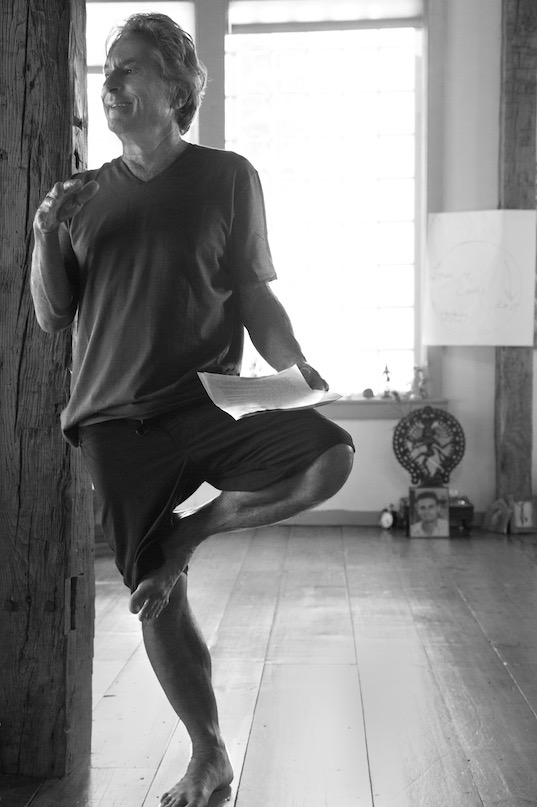When I began meditating in 1968, I was introduced to the luminous teachings of the Vijnana Bhairava Tantra, which mentions over a hundred doorways in to the inner world. A group of geniuses tutored me, and I was shown how meditation is a natural emergence of our longing for freedom and desire to be at home in the universe. And I was shown how to make practical techniques out of the teachings that modern people can utilize in their daily lives. There is a craft to meditating and to teaching meditation, that I was trained in and have refined and evolved over the past 50 years, in working with all kinds of people in all kinds of contexts. This is the knowledge that I want to pass on to ou. ~ Lorin Roche
Learning to be a meditation teacher is deeply enriching, because you practice basic human skills that are useful in every situation:
- listening deeply
- observing the motions of life
- noticing and honoring all emotions
- using all your dozen senses (balance, motion, oxygen, touch, temperature, smell, taste, vision, hearing, and more . . .)
During the two-year training, we cultivate the essential skills needed by a meditation teacher. Each month we focus on a different area of expertise.
These are the Core Teachings:
1. INTRODUCTION TO THE SCIENCE AND PRACTICE OF MEDITATION. The Radiance Sutras Approach utilizes 112 different doorways into meditation. Research on the benefits of meditation and why 20 million Americans are meditating, plus millions more in Canada, Australia, the United Kingdom, South America, and elsewhere. Meditation is a completely natural and instinctive capacity of the human body and everyone can do it. The experience of meditation is rhythmic, intimate, and individualistic. Introduction to the Eight Essential Meditations we will be using as a foundation.
2. SPONTANEITY AND RHYTHM. An important part of the art and science of teaching meditation is the ability to recognize spontaneous meditative states. Almost everyone has a wealth of naturally occurring meditative experience, that is a foundation to their further practice and a clue to their inherent nature. A skilled meditation teacher learns how to cooperate with the student’s inner nature, not suppress it. You will learn to structure a meditation practice so that it feels spontaneous, using Skills Checklists and Meditation Flowlists.
3. THE SUBTLE SENSUOUS WORLD OF MEDITATION. Develop the ability to recognize and utilize all the senses as gateways into meditation: inner and outer hearing, touch, motion, balance, joint position, oxygen sensing, vision, smell and taste. This is the Indriya Mandala. Human beings have more than a dozen senses, and they are all essential aspects of a healthy approach to meditation.
4. INSTINCTIVE WISDOM. Learn how to recognize and honor the instincts – the self-healing, self-evolving, powerful innate wisdom impulses of life: homing, exploring, trail making, gathering, nesting, resting, feeding, communing with nature, bonding, mating, protecting. During meditation, pranashakti fluctuates between these instinctive modes as needed, every few seconds or minutes. A skillful meditation teacher embraces all the instincts as they inspire and balance each other.
5. ELEMENTAL ADAPTABILITY. A meditation teacher needs to be intimate with earth, air, fire, water, and space as they are revealed by each of the senses and engaged by each instinct. This is the Tattva Mandala.
6. EMBRACING DESIRE. The senses, instincts and elements play through our bodies in impulses we call Desires. Skill in meditation includes accepting the gift and revelation of desire and emotion, and the ability to ride the motion into essence. This is the Kama Mandala, the rich mosaic of desiring energy-impulses continually streaming through the body.
7. THE DANCE OF EMOTION. Learn to dance with the full spectrum of emotions that make up a large part of everyone’s meditative experience moment-by-moment. This is one of the biggest challenges meditators face. For full vitality, mental and physical and spiritual health, it is essential to learn how to engage with the wild and peaceful motions of emotions. This is the Emotion Mandala.
8. SKILLS LAB. We will be reviewing the Skill Checklists and Meditation Flowlists, and discussing your adventures in teaching.
9. THE NEW LANGUAGE OF MEDITATION. INTEGRATION SESSION. Question and answer.
10. BRINGING MEDITATION TO THE WORLD. A skilled meditation teacher has laghu hasta, a light hand in giving instructions. We will hone the skills and principles we have been studying and practicing, and developing.
Enroll in Meditation Teacher Training

What is the Radiance Sutras Approach to Meditation?
Essentially, the Radiance Sutras approach is to honor individual differences and styles, and help each person find the ways of meditation that work best for them, instead of imposing one standard style on everyone.